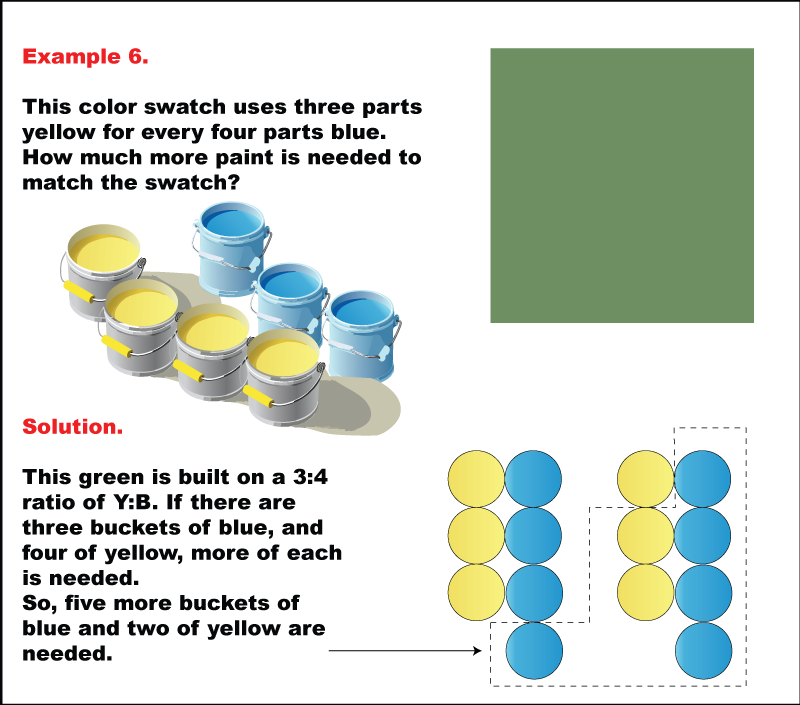
Display Title
Math Example: Color Mixtures: Example 6
Display Title
Math Example: Color Mixtures: Example 6

Topic
Ratios
Description
This color swatch demonstrates a green hue created by mixing three parts yellow for every four parts blue. The example illustrates how to determine the amount of additional paint needed to match the swatch when given an initial quantity. In this case, with three buckets of blue and four of yellow available, five more buckets of blue and two more of yellow are required to achieve the correct 3:4 ratio.
Color mixing examples like this one help teach the concept of ratios in a visually engaging and practical manner. By manipulating the proportions of different colors, students can see how ratios directly affect the resulting hue, providing a tangible application of mathematical principles in art and design.
Presenting multiple worked-out examples is crucial for students to fully grasp the concept of ratios. Each example offers a unique scenario, allowing students to recognize patterns, develop problem-solving strategies, and understand how to apply ratio calculations in various contexts. This approach reinforces learning and helps students build confidence in their ability to work with ratios.
Teacher's Script: "Now, class, let's examine this green color swatch. Notice how we need to maintain a specific ratio of yellow to blue to achieve this exact shade. Can you see how changing the proportion of either color would affect the final result? This example shows us how ratios are not just abstract numbers, but have real-world applications in fields like art and design."
For a complete collection of math examples related to Ratios and Color Mixtures click on this link: Math Examples: Color Mixture Collection.
| Common Core Standards | CCSS.MATH.CONTENT.6.RP.A.3 |
|---|---|
| Grade Range | 6 - 7 |
| Curriculum Nodes |
Algebra • Ratios, Proportions, and Percents • Ratios and Rates |
| Copyright Year | 2024 |
| Keywords | color mixtures, ratios |